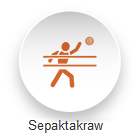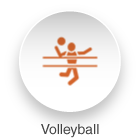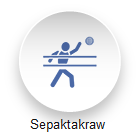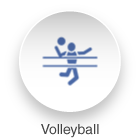| Q1. | How were the respective Councils formed? | |
The Councils were formed in 1959 to replace all sports councils previously organised at district level for the organisation of inter-schools games. The Councils have always adopted a 'gotong royong' approach, where the
Principals, Heads of Department and teachers offered their time and schools' resources and took turns to organise the various inter-school sports competitions for the students. It was a group of educators coming together
as a community to provide competition opportunities to develop students' sports talents and character. |
| Q2. | What are the objectives of the National School Games (NSG)? | |
The annual NSG competition opportunities provide a valuable platform for our students to cultivate values and develop character through sports. This is in line with the Council's motto of "Character in Sporting Excellence". |
| Q3. | Who organises the National School Games (NSG)? | |
Since 1959, Principals of Singapore schools have come together at the national level to organise inter-school games to encourage sports participation and promote sports excellence. The Principals now organise themselves
into the Singapore Primary Schools Sports Council (SPSSC) and the Singapore Schools Sports Council (SSSC) to organise games for the primary and secondary schools/pre-universities respectively. The National School Games
have been wholly run by the member schools, involving teachers, HODs, Administration Managers and all school leaders. MOE HQ provides technical advisory for the games. In 2014, the National School Games Office (NSGO)
was formed to serve as a central coordinating office to offload schools from some of the administrative and operational work of organising the NSG. |
| Q4. | Who funds the National School Games (NSG)? | |
Before 2015, the NSG were funded by the participating schools. An annual school subscription fee (computed on a per-student basis) was collected from every Government and Government-Aided schools. Fees were deliberately
kept low to ensure that school sports remain affordable and accessible to all schools. With effect from 2015, the Councils have been receiving full funding from MOE for the running of the NSG and for overseas sports
competitions which the Schools Sports Councils have obligations to participate. |
| Q5. | How has the organisation of the National School Games (NSG) changed since its inception? | |
The NSG forms the largest sporting platform organised for school students in Singapore. With more than 400 championship titles, the annual National School Games (NSG) involves more than 55,000 student athletes across schools
in Singapore. The NSG SSSC sports organised have increased from 16 sports in 1968 to 28 in 2016 while the SPSSC sports have increased from 10 to 21 over the same time period. |
| Q6. | Which period of the school calendar do the National School Games (NSG) run each year? | |
The NSG stretch from Term 1 in January to Term 3 in August of every school calendar year. |
| Q7. | What are the different divisions/age-groups of National School Games in the Singapore Primary Schools Sports Council (SPSSC) and Singapore Schools Sports Council (SSSC)? | |
For students born on 1 Jan, please refer to General Rules and Regulations (subject to conditions laid out in para 2.2) | SPSSC |
|---|
| SN | Sports | Senior Division (Age) | Junior Division (Age) | Age Dispensation
(For Junior Div only) | | 1 | Badminton | 11 - 13 | 9 - 11 | 7, 8 | | 2 | Basketball | 12 - 13 | 9 - 11 | NA | | 3 | Bowling | 11 - 13 | 9 - 11 | 7, 8 | | 4 | Floorball | 12 - 13 | 9 - 11 | NA | | 5 | Football | 12 - 13 | 10 - 11 | NA | | 6 | Golf | 9 - 13 | 7, 8 | | 7(i) | Artistic Gymnastics | 9 - 13 (Boys Senior Optional) | 7, 8 (Age Dispensation) (Boys Junior Under 9) 9 - 11 (Boys Junior Novice & Boys Junior Optional) | 7, 8 | 11 - 13 (Girls Senior I) 9 - 13 (Girls Senior II) | 9 (Girls Junior I) 10, 11 (Girls Junior II) 9 - 11 (Girls Junior III) | | 7(ii) | Rhythmic Gymnastics | 9 - 13 | 9 - 11 | 7, 8 | | 8 | Hockey | 12 - 13 | 10 (Junior 1) 11 (Junior 2) | NA | | 9 | Netball | 12 - 13 | 10 - 11 | NA | | 10 | Rope Skipping | 11 - 13 | 9 - 11 | 7, 8 | | 11 | Rugby | 12 - 13 | 10 - 11 | NA | | 12 | Sailing | 11 - 13 | 9 - 11 | 7, 8 | | 13 | Sepaktakraw | 11 - 13 | 9 - 11 | NA | | 14 | Softball | 11 - 13 | 9 - 11 | NA | | 15 | Swimming | 12 (Senior 1) 13 (Senior 2) | 9 - 10 (Junior 1) 11 (Junior 2) | 7, 8 | | 16 | Table Tennis | 11 - 13 | 9 - 11 | 7, 8 | | 17 | Taekwondo | 11 - 13 | 9 - 11 | 7, 8 | | 18 | Tennis | 11 - 13 | 9 - 11 | 7, 8 | | 19 | Track and Field | 12 (Senior 1) 13 (Senior 2) | 9 - 10 (Junior 1) 11 (Junior 2) | 7, 8 | | 20 | Volleyball | 11 - 13 | 9 - 11 | NA | | 21 | Wushu | 11 - 13 | 9 - 11 | 7, 8 |
| SSSC (All 28 Sports) |
|---|
| C Division (Age) | B Division (Age) | A Division (Age) | | 13 - 14 | 15 - 17* | 17* - 20 |
* Refer to General Rules and Regulations para 2.1 |
| Q8. | Are there international schools sports competition platforms for students to participate? | |
The Singapore Schools Sports Council (SSSC) is affiliated with the regional sports organisations to provide top student athletes with the opportunities to spar with regional players, i.e. ASEAN Schools Sports Council (ASSC),
the Asian Schools Football Federation (ASFF) the Asian School Sport Federation (ASSF) and International School Sport Federation (ISF). |
| Q9. | What are the objectives of the ASEAN Schools Games? | |
The objectives of the ASEAN Schools Games are as follows: - To promote ASEAN Solidarity in our youth through school sports;
- To provide opportunities for school athletes to benchmark their sporting talents in the ASEAN region; and
- To provide opportunities for school athletes to interact and engage in cultural exchange within ASEAN
|
| Q10. | What are the objectives of the Asian School Sport Federation (ASSF)? | |
The objectives of the ASSF are: - To promote the moral and physical education of students in Asia;
- To organise school sport competitions among member countries, regions or territories;
- To organise and promote school sport activities and exchanges which are conducive to the improvement of school performance in Asian schools and
- To strengthen unity and to enhance international friendship among Asian students through such activities
|
| Q11. | What are the objectives of the Asian Schools Football Federation (ASFF)? | |
The objectives of the ASFF are: - To ensure the continuity of the Asian Schools Football Tournament;
- To organize and promote activities conducive to the improvement of the quality of Football in Asian Schools; and
- To promote international friendship and understanding among Asian Schools participants through such activities
|



















































 Games
Games PRI Sports
PRI Sports SEC/JC/CI Sports
SEC/JC/CI Sports Sport Microsite
Sport Microsite



